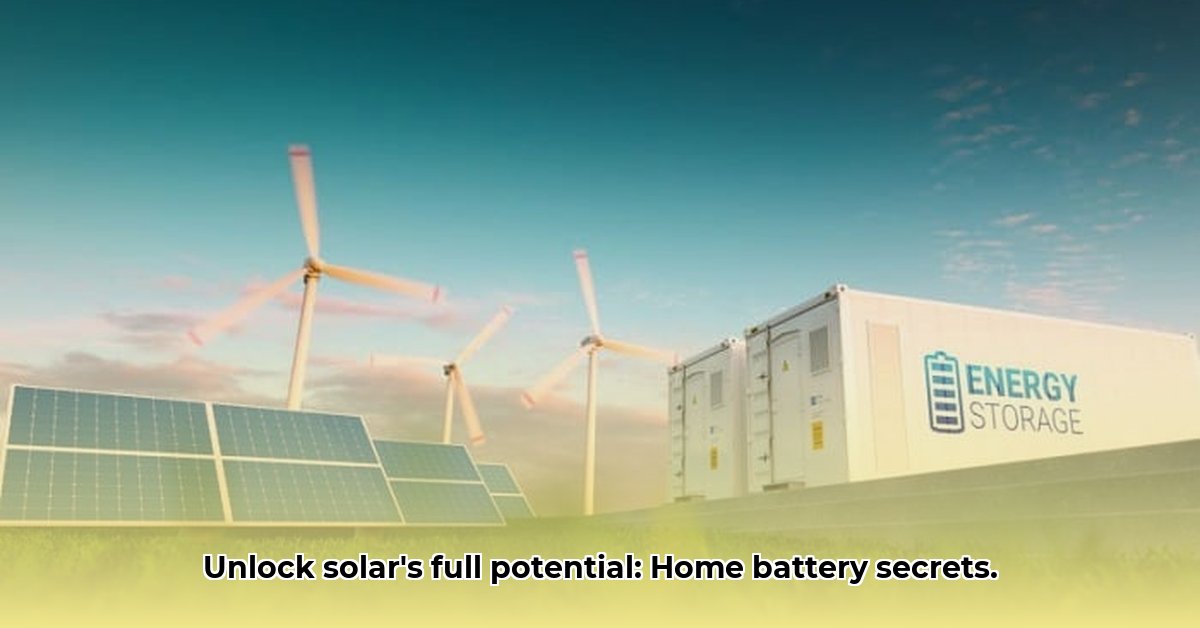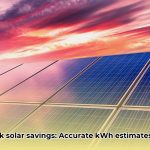Going solar is great, but what happens when the sun goes down? This guide breaks down everything you need to know about storing that sunshine for later use. Whether you’re a homeowner, a business owner, or just plain curious, we’ll help you understand the different ways to store solar energy, choose the right system for your needs, and ensure your solar investment pays off for years to come. We’ll cover all the basics in plain English, so you can feel confident making smart decisions about solar energy storage. To learn more about solar panel energy production, check out this helpful resource.
Exploring Solar Energy Storage Technologies
So, you’ve embraced solar power, but what happens when the sun dips below the horizon, or a storm rolls in? That’s where energy storage comes in – cleverly saving that sunshine for later use. Let’s explore how it’s done, looking at solutions for everyone from homeowners to large-scale power providers, and examining diverse energy storage technologies. Understanding these options is key to maximizing the benefits of your solar investment.
Home Battery Systems: Your Solar Power Backup and Energy Independence
For most homeowners, batteries are the go-to solution. Think of them as giant, rechargeable power banks, soaking up extra solar energy during the day and releasing it when you need it. Lithium-ion batteries are currently the most popular choice, offering a reasonably good balance of cost, performance, and longevity. However, other chemistries like Lithium Iron Phosphate (LFP) are gaining traction due to their enhanced safety and lifespan. They’re like a super-powered emergency power supply built right into your home, increasing energy independence and providing resilience during grid outages.
Getting Started with Home Battery Storage:
- Assess your energy needs: How much electricity do you typically use each day? Analyze your energy bills for the past year to understand your consumption patterns throughout the seasons. This detailed assessment helps determine the right battery capacity for your home. Overestimate a little; you might find you use more than you think, especially if you plan to add electric vehicles or other energy-intensive appliances in the future!
- Budget carefully: Battery systems range widely in price, from budget-friendly options to premium solutions with advanced features. Do your research – compare models, considering factors like capacity, lifespan, and warranty. Check for any government rebates, tax credits, or financing options available in your area. These can significantly reduce the upfront cost and improve your return on investment. Don’t forget to factor in potential maintenance costs over the battery’s lifespan.
- Choose a certified and reliable installer: Professional installation is key for optimal performance and safety. Don’t cut corners here; a poorly installed battery system can be dangerous and inefficient, potentially voiding warranties. Look for installers who are certified by organizations like the North American Board of Certified Energy Practitioners (NABCEP). Ask for references, check online reviews, and verify their insurance and licensing. A reputable installer will also help you navigate local permitting requirements and utility interconnection processes.
The Ups and Downs of Home Batteries:
While incredibly convenient and increasingly affordable, home batteries aren’t perfect. The upfront cost can still be a barrier for some homeowners, although prices are steadily declining. Also, batteries have a limited lifespan – eventually, they’ll need replacing, although warranties are improving. Finally, there are environmental considerations concerning their manufacture and eventual recycling or disposal. Responsible manufacturers are focusing on sustainable sourcing and recycling programs. Technology is constantly improving, so keep an eye out for advances in battery chemistry, energy density, and lifespan.
Beyond Home Batteries: Large-Scale Energy Storage and Grid Solutions
While batteries dominate the home energy storage market, other methods exist, especially for larger-scale applications like commercial buildings, industrial facilities, or utility grids, enabling grid solutions. These technologies often provide higher capacity and longer duration storage, essential for maintaining grid stability and integrating large amounts of renewable energy.
- Pumped Hydro Storage: Imagine a giant, uphill water pump. This method uses excess solar power to pump water to a higher elevation reservoir. Then, when energy is needed, the water flows downhill through penstocks, turning turbines and generating electricity. It’s a mature and highly efficient technology that can provides long-duration storage, but it requires specific geographical locations with suitable hills or valleys and access to water, which limits its widespread adoption. Environmental considerations related to dam construction and water usage must also be carefully addressed.
- Thermal Energy Storage: This innovative approach uses the heat generated by solar energy (or other sources) to store energy. Materials such as molten salts, specialized oils, or even concrete can absorb and hold significant amounts of heat. This stored heat can then be used to generate electricity through a steam turbine or provide direct heating for industrial processes or district heating systems. It’s like a giant, slow-release heat pack for power. This technology is particularly well-suited for concentrating solar power (CSP) plants and industrial applications. Thermal storage is still evolving but has huge potential, offering promising advancements in efficiency and cost-effectiveness.
- Compressed Air Energy Storage (CAES): Here, excess solar power (or other sources) compresses air and stores it into underground caverns, depleted natural gas reservoirs, or other suitable containers. When energy is needed, the compressed air is released, heated (often with natural gas, although advanced CAES systems are exploring heat recovery and thermal storage), and then expanded through turbines to generate electricity. It’s similar to a giant air compressor. CAES is a relatively newer technology and is showing promise for large-scale storage, but it’s still under development and faces challenges in efficiency, geological suitability, and the reliance on natural gas in some designs. Advanced Adiabatic CAES (AA-CAES) systems, which don’t require natural gas, are being actively developed.
Navigating the Regulatory Landscape and Incentive Programs
The rules and regulations surrounding energy storage vary greatly depending on your location. “Net metering” policies, which credit homeowners for excess solar energy fed back into the grid, are important to understand, but increasingly, “net billing” policies are becoming more common, which compensate solar exports at a lower rate. The specifics of these policies differ significantly between states, provinces, and countries, impacting the financial feasibility of installing a home storage system. Some regions offer time-of-use (TOU) rates, where electricity prices vary depending on the time of day, making battery storage more attractive for shifting energy consumption to off-peak hours.
Furthermore, regulations on battery manufacturing, usage, and disposal are continuously changing, driven by safety concerns and environmental considerations. Stay informed about local permitting requirements, interconnection standards, and environmental regulations related to battery disposal and recycling. Changes in these regulations might greatly affect your decision, but what about potential incentive programs? Many government and utility programs offer rebates, tax credits, or performance-based incentives for installing energy storage systems. Research available incentives in your area to reduce the upfront cost and improve the overall economics of your project.
Understanding the Risks: A Quick Overview of Energy Storage Challenges
Different energy storage technologies each present unique challenges. Let’s look at some of the main risks:
| Technology | Potential Risks |
|---|---|
| Lithium-ion Batteries | High upfront cost, limited lifespan (8-15 years), thermal runaway risk (although mitigated by advanced safety features), environmental impact of materials and disposal |
| Lead-acid Batteries | Lower initial cost, but shorter lifespan and lower efficiency than lithium-ion, environmental impact, requires regular maintenance |
| Pumped Hydro | Requires specific geography, high initial investment, potential environmental impact on water ecosystems, long permitting and construction timelines |
| Compressed Air | Requires suitable geological formations, efficiency challenges (especially with non-adiabatic systems), potential geological risks, scalability still being improved |
| Thermal Storage | Still under development, long-term performance and cost-effectiveness remain to be fully proven, material degradation at high temperatures, potential environmental concerns related to storage materials |
Making the Right Choice for You and Your Energy Needs
The ideal energy storage solution depends entirely on your individual situation, location, energy needs, and financial goals. Whether you’re a homeowner, a business owner, or a utility provider, there’s no one-size-fits-all answer. Careful planning is essential, considering factors like budget, energy consumption patterns, applicable regulations, available incentives, environmental impact, and the technology’s lifespan. Weighing the pros and cons of each option can help you find the best fit for your energy needs.
Consider consulting with an independent energy consultant or engineer to get unbiased advice and guidance. They can help you assess your needs, evaluate different technologies, and develop a customized energy storage solution that meets your specific requirements. Remember, the landscape of solar and energy storage is constantly evolving, so staying up-to-date on the latest developments is key.
How to Choose the Best Solar Battery System for My Home Based on ROI and Long-Term Performance
Key Takeaways:
- Choosing the right home solar battery system hinges on a comprehensive understanding of your energy needs, budget constraints, the specific climate and location, and long-term goals (prioritizing backup power during outages versus maximizing bill reduction through peak shaving).
- Numerous top-performing options exist in the market, and careful comparison and evaluation are crucial. Factors like usable capacity, round-trip efficiency, lifespan (both in cycles and years), depth of discharge, warranty terms, and temperature sensitivity significantly impact the return on investment (ROI) and the overall long-term performance of the system.
- Understanding the fundamental differences between AC and DC coupling configurations, the impact of round
- Hydro Extrusions USA Leads North American Aluminum Profile Solutions - December 28, 2025
- Hydro North America Leads Aluminum Extrusion Solutions Across Diverse Industries - December 27, 2025
- Hydro Extrusion North America Provides Custom Solutions Across Diverse - December 26, 2025
















